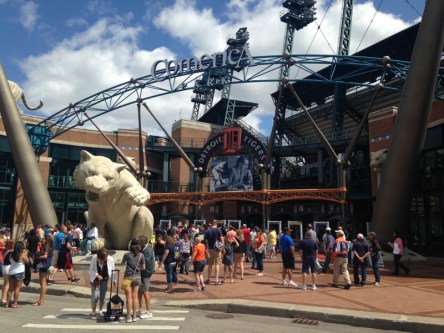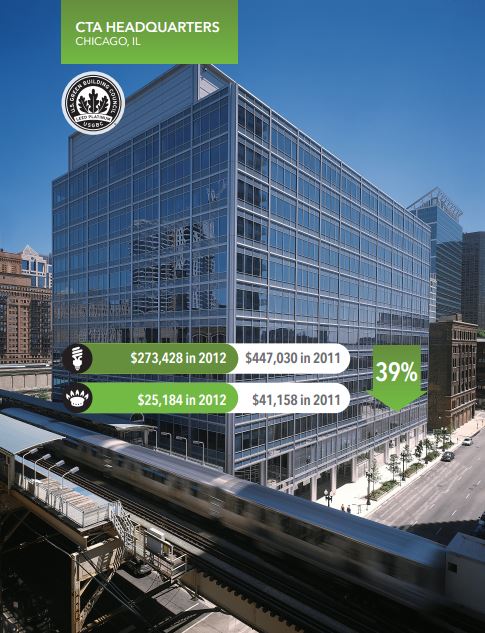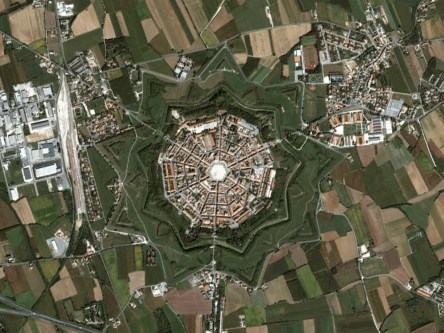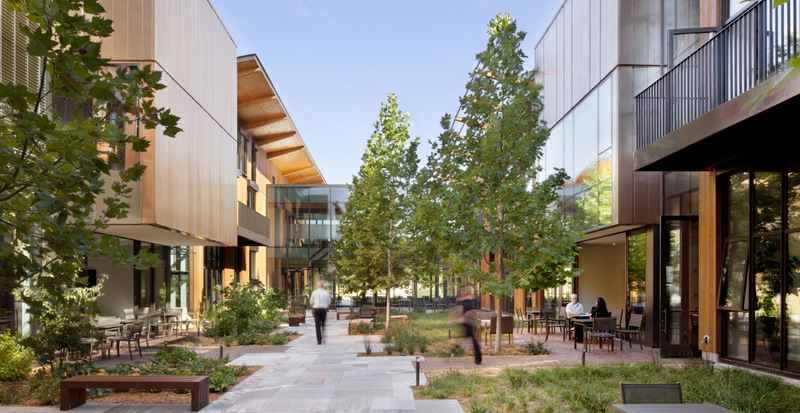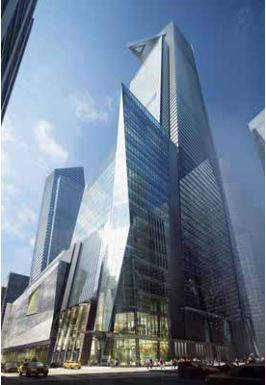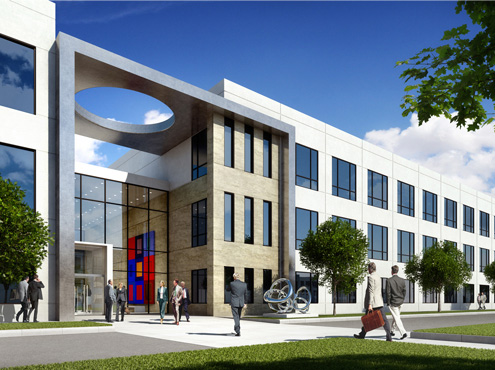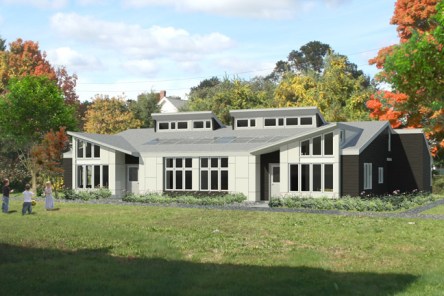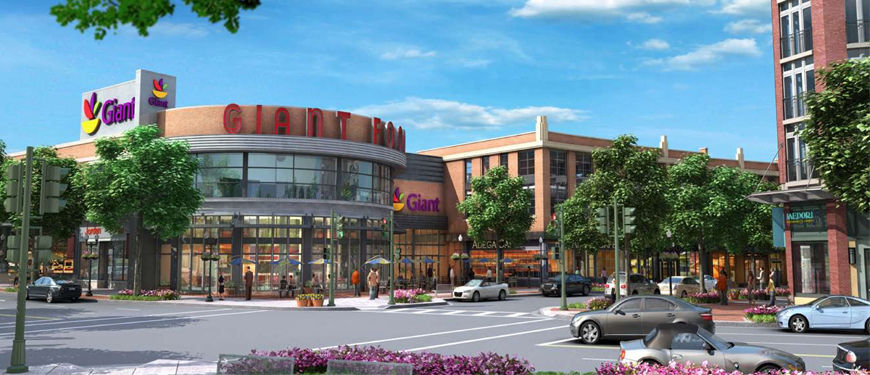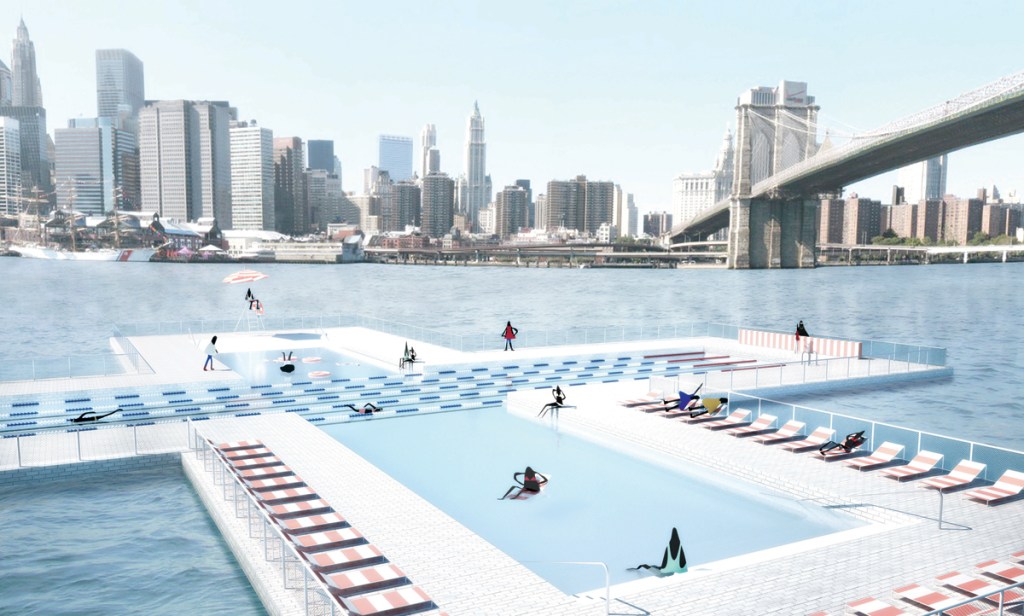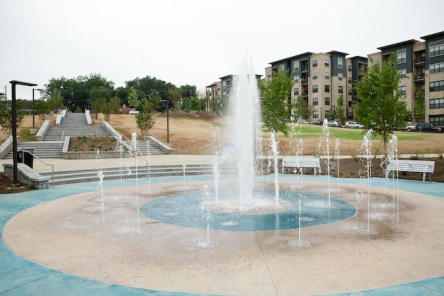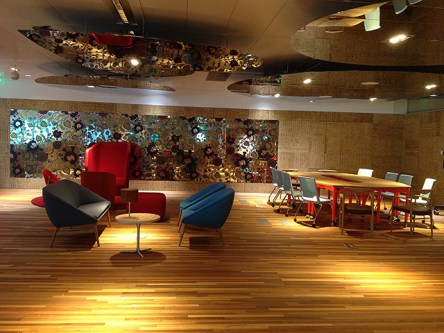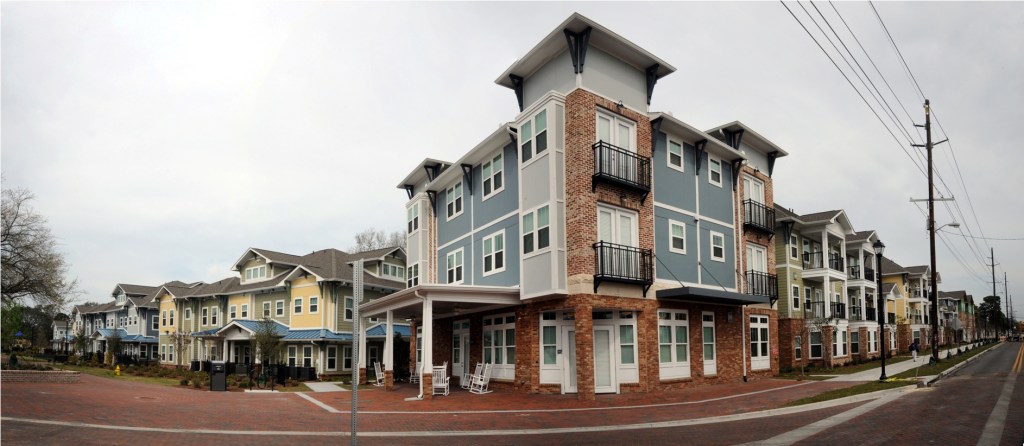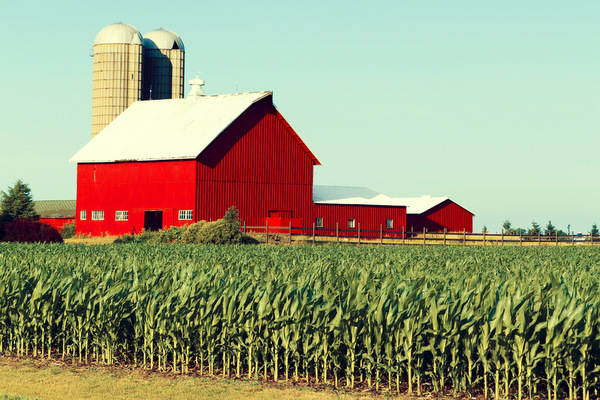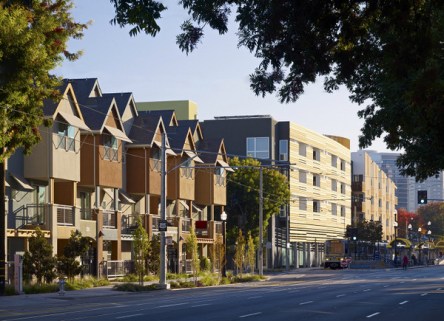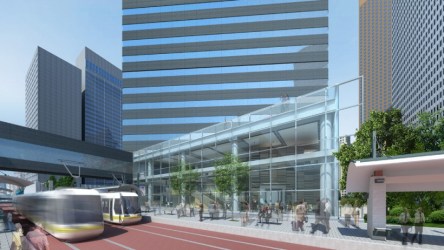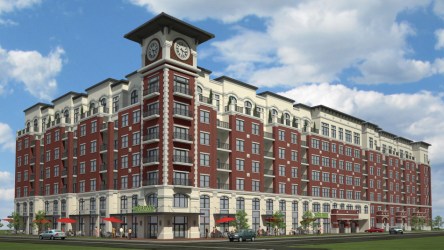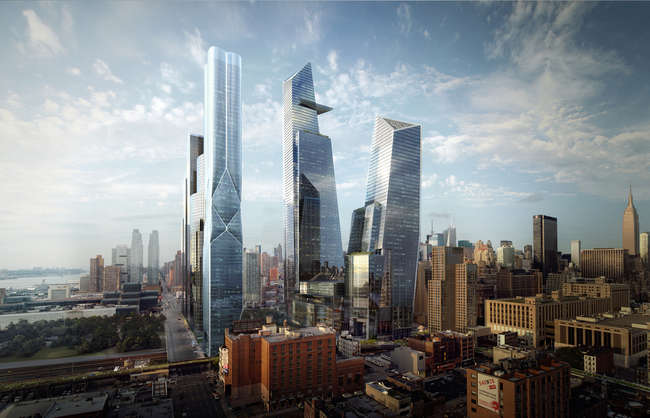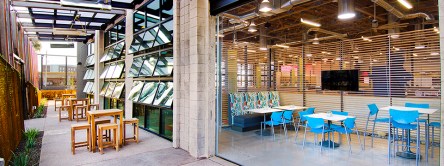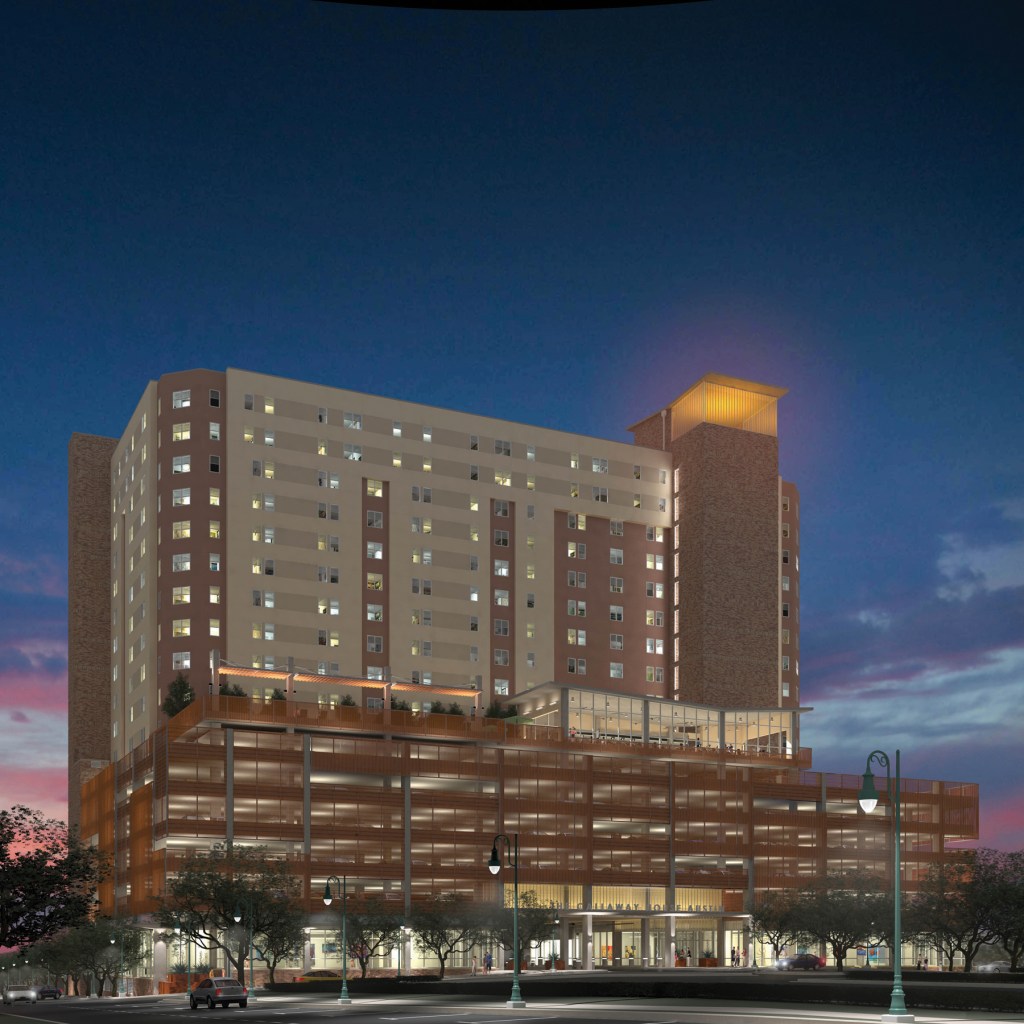Building a house is nothing like ordering a pizza over the phone. But maybe it should be. With few exceptions, restaurants order ingredients and supplies in advance. They create a menu of offerings and then take orders over the phone based on the menu listings. Substitutions are made when the order is placed. Once the staff ensures that they have what’s needed, the order is filled. What if contractors took the same approach? It has happened before with a high success rate. Rosie Romero offered “the impossible promise” that projects would come in on time and on budget, or they would be free. Jeb Breithaupt of JEB Design/Build in Shreveport, La. reports to Builder Online that he’s making a similar offer to his clients. Both offer the promise by mimicking the pizza process. The design/build firms spec out the project, like creating a menu and pricing. Clients then make selections and customizations as needed. Once the availability of materials is verified, the orders are placed. Homeowners view and approve the orders and then ground breaks on the project. Clients can’t go back and make changes to the order. The contractors aren’t surprised by changes in price or the availability of materials after the fact. It’s all arranged before the first shovel juts into the ground. This process makes so much sense. “That’s what my company tries to do on custom home projects. I’ve also tried it on a couple of design/build jobs, and believe it or not, it’s making our process smoother and our clients happier,” says Breithaupt. The pizza process has notable benefits. It saves time: No more waiting for materials to arrive or delaying progress because of scheduling problems with subcontractors. Everything is available when and where you need it because it...
Commercial Comeback
Detroit on the move
Ed. note: The third in a three-part series, our final article on the real estate realities for Detroit, Michigan, as the city emerges from a long period of decline. Read the first installments here (Part 1) and here (Part 2). Walking around downtown Detroit, at many times of day, feels like one has wandered onto a deserted movie set. Historic skyscrapers loom overhead. There are hints of change and progress: work on a new rail line, construction fences around old buildings, for rent signs in windows. What you don’t see, that feels strangest of all, are very many people. At 8 a.m. and 5 p.m., there is foot traffic as employees walk to or from their jobs. A great many of them are wearing Quicken Loan employee ID badges, identifying them as part of Dan Gilbert’s empire. Gilbert’s investment in the city, from real estate purchases – more than 50 buildings to date – in addition to centering Quicken’s headquarters downtown and funding a large portion of the M:1 RAIL line, is ubiquitous. “Dan Gilbert obviously is leading the charge in downtown real estate reinvestment. He’s acquired 52 properties in the last couple of years, for Quicken and various subsidiary companies of his own,” said John Latessa, Senior Managing Director of CBRE’s Michigan operations. The other major property accumulator, the Caesars Pizza-founding, sports team-owning Ilitch family, has been buying up lots and decaying buildings for a new hockey stadium for years. “(Gilbert and the Ilitches) are generating the interest that didn’t exist before. If they weren’t doing this stuff and couldn’t do it on their own, a lot of these other projects wouldn’t be possible,” said Scott Allen, president of Fourmidable, a Detroit-based multifamily property management firm. Rising rents for multifamily Detroit’s real estate...
Ride to the Future
Cycling and multifamily
Amidst rising health care costs and the great urban rebound, the car is being replaced by alternative means of transport, such as biking. Millennials, one of the largest renter cohorts, are driving 23 percent less today than their peers did in 2001. According to U.S. Public Interest Research Group per capita driving rates have shrunken to 1996 levels. The American Public Transit Association found that Millennials’ preferred method of getting around is biking, while driving came in last, behind mass transit and walking. But on-the-go Millennials aren’t the only ones choosing two wheels instead of four. Between 2000 and 2011 the number of Americans getting to work mostly by bike grew by 47 percent, New Geography found. According to the latest National Household Travel Survey data the 60 to 79 demographic generated 37 percent of the nation’s increase in biking between 1995 and 2009. Moreover, between 2001 and 2011 the number of biking baby boomers doubled, according to Bicycle Retailer Industry Directory. So how does the growing popularity of biking fit into America’s communities and apartment industry? Zach Vanderkooy, PeopleforBikes’ Green Lane Project International Programs Manager, elaborates. What are the benefits of biking? Zach Vanderkooy: There are so many — it’s a low-cost, convenient way to get around for short trips, it reduces traffic congestion, adds economic vitality, provides access to fresh air, all while being a physical activity that’s built in to everyday life. Riding a bike is inherently joyful and practical. You don’t have to work too hard to sell that. Most importantly, biking offers a chance to explore and engage with a community at a more human scale. Much like people on foot, people on bikes activate a place with recognizable faces — every passing rider is a chance for a...
Professional Advancement
Advice from able leaders
Problem: You want to be a greater asset to your company but the path to success seems unclear and you feel like you’re spinning your wheels. Solution: Advance your career by developing leadership skills that will prepare you for promotion. The skill set of a solid leader stands out on a resume or CV, and the effects of good leadership are often quantifiable. The Balance Sheet caught up with managers and executives throughout the industry to reveal the most sought-after leadership traits that will help you get ahead and lead with confidence. Getting Started Most of today’s leaders began as deck hands, so to speak, performing intro-level tasks while struggling to find ways to shine. John Crossman, President of Yardi client Crossman and Company real estate firm, believes that you don’t have to be the best student or the most flawless employee in order to catch your boss’s attention. Work your way up the ranks by developing servanthood and passion. “Being willing to learn and serve, helping your team, will provide you with the insights needed to do your job well and build a strong professional network,” begins Crossman. “Then when your knowledge and experience are coupled with passion, you will be unstoppable. When you’re passionate, that overflows to the entire company. That’s crucial to success in every area.” Integrity is another characteristic that can place you in better standing with your peers and your superiors. Chuck Fuhr, former Division President of Ryland Homes, Atlanta, served more than four decades in the real estate industry. He notes that professionals with integrity are priceless. They prove to be a solid, long term investment for companies. “A leader needs to have high integrity. Team members need to know their business or organization is being run in an honest and fair manner,” says Fuhr. Unethical or questionable behavior is like duct tapping a broken rudder. It may work for a moment but the situation is likely to get out of control. So much in the world of real estate is tight-knit and interrelated social networking. Bad dealings and poor relationships will place you at a disadvantage later. Don Rogers, General Manager at Yardi, Atlanta, also acknowledges integrity as an essential characteristic of a good leader. “A leader must be honest, be consistent, and do the right thing for your employees and customers,” says Rogers. But even the best leaders may have a hard time discerning what is right, which brings him to another valuable feature: good communication skills. “It’s a common misconception that good leaders always have the answers,” Rogers says. “I don’t always have the answers but I try to take the time to learn the facts and make a reasonable decision after hearing them. So it’s equally important to have good communication – to be honest, and be open—and to empathize with others. Remember where you came from when working with your staff, and try to understand the other points of view.” Full Speed Ahead Once you’ve secured your first management position, working further upwards is a matter of strategy and careful planning. Laquna Marrable, Assistant Director of Human Resources and Employment Services, has hired for international corporations as well as private institutions. She has noticed that companies of all sizes prize strategic thinkers. “It’s important for leaders to be able to see the importance of what they’re doing right now as it relates to the overall goals and missions of the company,” says Marrable. “They must be able to closely tie every project, every assignment, every team member, to the overall mission or objective. For example, ‘I’ve got Mrs. X working for me and she’s responsible for this. The responsibilities of this position relate to our mission because of Y and Z. By accomplishing her tasks, we’re 20 percent closer to the end result.’ That strategic approach enables leaders to make sure that everyone is on task working towards...
Divining Detroit
Motor City's Second Act
The first thing you learn in Detroit is that you don’t know anything about Detroit. Most Americans – even many Michigan residents – perceive the city as crime-ridden, crumbling, conundrum. Spend a day or two in Detroit and you’ll likely come away with a different impression: one of a place that, as one lifelong resident put it, “has gone through hell, and now, very quietly, there are pockets of rebirth.” Rebirth, encore, renaissance – these are the kinds of words you hear a lot of when talking to passionate Detroiters. Their enthusiasm is infectious. The city’s transformation from a metropolis of 2 million to a city of 688,700 (and falling) – and what comes next – is a story that fascinates. Comebacks, after all, are one of America’s favorite plotlines. The real estate broker Austin Black II has a problem, one that most residential real estate agents or brokers in America would envy: he needs more condos and lofts to sell, because buyers are beating down his door. From 2013 to 2014, Black’s business at City Living Detroit, a full service residential brokerage specializing in the greater Downtown and Midtown neighborhoods, has jumped more than 25 percent. “It would be higher if there was more inventory. The average sale price is up substantially over last year,” Black notes. In fact, the prices for the units he has sold – starting at $200,000 and going up to $600,000 – are virtually unheard of in still-struggling Detroit’s single family home market. The reasons are attributable to the two oldest themes of real estate: supply and demand, and location, location, location. Since the 2008-2010 economic slump, just one new for-sale condo project has come online in the coveted Midtown area, home to Wayne State University and Detroit Medical Center. Other housing projects under construction are rentals, and while rents are on the upswing, Black says his clients would prefer to buy. “Pre-recession, most buyers were all young professionals, either right out of college or not too far out. That market has changed drastically to include young professionals, mid-career professionals, established executives and empty nesters. It’s a very diverse market now, more typical of what you see in other major cities,” Black says. He’s even seeing many locals moving back toward the city from the suburbs, lured by a low-maintenance multifamily lifestyle. There are incentives to urban living for buyers and renters alike. Nine major Detroit employers participate in a program that provides a $20,000 forgivable down payment loan for a home purchase near the commercial core, or a rental subsidy paid directly to the landlord. Adding to the future appeal of the neighborhoods Black sells is the ongoing construction of the M-1 RAIL, a 3.3 mile long circulating streetcar along Woodward Avenue that will begin to link the downtown core with the outlying suburbs. Considering the vast expanse of territory that makes up Detroit – the city is 149 square miles in size – it’s just a start to fixing a chronic transit problem. If you live or work in Detroit, locals say, a car or bike is the only way to efficiently get from place to place right now. The evangelist Jeanette Pierce grew up in Detroit and spent most of her 20’s living in the heart of downtown. She loved the lifestyle so much that she turned her passion into a full time job: reputation management and education about what’s really doing on in D-town. Today, she and her husband, a scientist, are homeowners in Lafayette Park, a downtown adjacent neighborhood that’s just a few blocks from the businesses, casinos, stadiums and hotels in the downtown core. Jeanette calls Detroit “MY city” with the ferocity of a mother bear protecting her cub. She started her tours to show fellow locals that “we’re not martyrs” for choosing life outside of suburbia. Her business is now part of a foundation-funded non-profit, D:Hive,...
Smart Green Buildings...
Commercial development
Going green has become a way of life for many of us. Mostly thanks to the efforts of environmental groups who advocate for a greener future, we can now easily incorporate sustainable practices into our daily lives. We carpool to work, buy hybrid cars, use reusable shopping bags, compost, reduce energy consumption and save water any way we can. Whereas these individual undertakings are indeed effective and help stretch our planet’s resources on a daily basis, achieving sustainability on a larger scale wouldn’t be possible without serious input from our nations’ development leaders and influencers, including architects, urban planners, property owners, managers and landlords. Many developers have already adhered to the green building movement and started delivering high-performance structures that prioritize livability and occupant well-being. Aside from the obvious environmental benefits, building green typically translates into happier employees, improved productivity, lower operating costs and implicitly higher returns for owners. Moreover, by designing and constructing ecologically-intelligent buildings, developers may obtain financial and regulatory incentives to further support their practices. According to the U.S. Green Building Council (USGBC), New York, Maryland, Massachusetts and Oregon are on the leading edge of states offering tax credits for LEED Certified buildings; Portland (OR) and Seattle (WA) offer grants for energy modeling, commissioning and related costs; the private Green Building Loan Fund in Pittsburgh does much the same on a loan basis; and Arlington County (VA) links preferred zoning considerations for LEED projects. From highly-efficient windows, formaldehyde-free furniture, live walls and green roofs, water-saving equipment, solar panels and personal comfort controls, there’s a plethora of new technologies available to help investors add function, cost-efficiency and value to commercial buildings. The importance of delivering healthy spaces derives precisely from the huge impact that the built environment has on human health, especially...
Purpose Cities
Urban Planning 2.0
What sets the blossoming Adelaide, Australia apart from the confines of Palmanova, Italy? It’s a question that many city designers face with a mix of fear and excitement. And with more purpose cities on the horizon, it’s a question better answered sooner than later. City planners may find the answers by taking a look into multifamily developments. Purpose-built cities, or planned cities, are cities constructed from the ground up to fulfill a distinct need. In the case of Brasilia, Brazil, planners selected the location to avoid maritime raids of the early 19th century. El Salvador, Chile, was built as a self-sustaining center for miners. Today’s purpose cities are more of a novelty in comparison. Designers envision futuristic utopias that provide a haven from carbon-riddled metropolises. Purpose cities and smart cities often merge, touting automated infrastructure and an inclination towards sustainability. Well organized, sustainable, with that new city scent—why aren’t the new purpose cities more popular? Why aren’t cities like Songdo and Lavasa bursting at the seams? Most planned cities are placed in uncharted territory, an effort to transform a desert into an oasis or a pristine wilderness into tame city streets. Far commutes from “civilization” don’t appeal to those who like to stay in touch with family and friends. Remote locations are also a tough sell for businesses, a headache for transportation coordinators, and a gamble for hospitality and entertainment leaders. Building on pristine, undeveloped lands certainly doesn’t bode well for environmentalists. Sustainability and sprawl are incongruent at best. A more suitable approach has been to build on reclaimed land or retrofit existing cities. Amsterdam 2.0 leads Europe in smart city retrofits and redesigns. Santiago is also etching its name of the world’s list of tech-savvy, earth-friendly existing cities. Of equal importance, all purpose cities...
Commercial Green
Certification Benefits
The recent recession may have been the best thing to happen to sustainable commercial building. During those years, sustainable buildings proved their value: sustainable properties experienced lower vacancy rates; builders with green experience fared better than their counterparts; and businesses began to acknowledge green building and renovation for its cost-saving benefits. The environmental benefits were often received as an afterthought. “During the recession, tenants and landlords tried to save on up-front construction costs, but they realized that by putting sustainable strategies in place, they could really save money in the long run,” says Bill Abballe, Program Manager at SouthFace. It’s not just green buildings that can cut costs in the commercial sector. The Green Edge report issued by the National Resources Defense Council offers up-to-date, detailed data on the benefits of green infrastructure for commercial developers. Research by Building Owners and Managers Association International (BOMA) asserts that, “implementing sustainable building practices is not a fad, but a proven strategy for reducing costs, enhancing asset value, improving tenant satisfaction and increasing net operating income.” Studies by the Green Building Alliance summarize what a variety of sources have confirmed. Properties and communities with green building certifications achieve: Higher rental or resale value Higher occupant satisfaction Higher demand Lower operating costs Yet even the greenest commercial building will fall short of its potential without proper certification. Third party certification programs provide validity to green building claims in a way that can attract capital and tenants with ease. Commercial developers may now choose between a number of sustainable certification programs that offer various levels of prestige: Building Research Establishment’s Environmental Assessment Method (BREEAM) was the first comprehensive green building rating system and is currently the leading international design and assessment method for sustainable buildings. BREEM thoroughly analyzes multiple factors throughout the project’s lifecycle to determine its sustainability ratings. Leadership in Energy and Environmental Design (LEED) is a sustainable building certification program that recognizes best-in-class building strategies and practices. It gained popularity in the United States and now has the largest globally accepted certification program. But perhaps the most prestigious certifications come from Living Building Challenge (LBC), which honors built projects that mimic the natural environment’s efficiency and balance. Net Zero operations in water, waste, and energy are the mere foundation to other rigorous standards. To date, there are only eight LBC buildings on earth. Green Globes has gained popularity in North America as an affordable alternative to the aforementioned programs. This environmental design and management tool offers online assessment and guidance for design, operation, and management. Quick feedback and interactive components makes this certification program a rising star. There are also several regional and state programs, such as EarthCraft Light Commercial, which specializes in green building certifications for structures in the southeastern United States. The small scale of its realm works to the organization’s advantage. EarthCraft is able to perform in-person evaluations to assure compliance. While certifications may verify a commercial property’s sustainability at the time of construction or renovation, it takes the right software to monitor long-term efficiency and ROI. Automating daily meter readings, data analysis, costs and consumption can be beneficial. Owners and operators can quickly address any issues that may arise to assure optimal operations. To stay ahead of the curve, companies must develop portfolios with proven sustainable features. The demand for certified, sustainable commercial building is estimated to increase. Cushman and Wakefield surveyed 25 premiere real estate property owners and managers in North America. 60% of respondents believed that investor interest in sustainable performance is increasing. 68% of respondents currently include sustainability in their investment evaluations. Businesses aim to create the best environment for their talent, driving end-user demand for holistic sustainability. From investors to tenants, sustainable building has taken center stage as the future of commercial real...
Hudson Yards
Quantified Community
New York City’s Hudson Yards marks the beginning of a new era in urban design. Developed by Related Companies and Oxford Properties Group on the West Side of Manhattan, the $20 billion project is being touted as the largest private real estate development in the U.S. history and a model of responsible development. Everything about Hudson Yards is impressive; from the massively heavy, incredibly strong platforms that will serve as a foundation for the premier district, to the innovative infrastructure systems and state-of-the-art buildings that will redefine the area’s vibe and skyline. But what’s fascinating about Hudson Yards are not just its grandeur and advanced engineering. The mega-development puts people first; it promises to build a nurturing environment with emphasis on livability, sustainability and occupant well-being. To accomplish this, the developers have launched a series of interactive programs, including the “Quantified Community” project, a joint venture with New York University’s Center for Urban Science and Progress (CUSP). The partnership aims to create the nation’s first “Quantified Community” – a fully-instrumented urban neighborhood that will measure and analyze key physical and environmental attributes at Hudson Yards. With this new project, Related and Oxford seek to deliver an enhanced experience for both tenants and residents while improving operational efficiencies and productivity at the complex. “The ability to conceive of and develop an entirely new neighborhood creates tremendous opportunities. Hudson Yards will be the most connected, measured, and technologically advanced digital district in the nation,” said Jay Cross, President of Related Hudson Yards. “Our cutting-edge commercial tenants are drawn to Hudson Yards for its state-of-the-art infrastructure featuring unprecedented wired, wireless, broadband, and satellite connectivity; and energy optimization through on-site power generation and central waste systems. Through our partnership with CUSP we will harness big data to continually...
Master-Planned Communities
Livability, Walkability at Cypress Waters
With a burgeoning demand for sustainable living and mixed-use, walkable environments, the country’s master-planned communities are thriving. The top 20 master-planned communities sold 15,338 homes in 2013, which is an 11% increase over 2012, according to a report compiled by John Burns Real Estate Consulting. Texas dominated the ranking, with nine communities landing the list. Boasting a job-centric economy, the Dallas-Fort Worth Metroplex continues to be a big draw for both local and relocation home-buyers. The Metroplex has become an important target market for many new businesses as well as corporate expansions, which has generated massive job growth and a booming housing industry .The positive momentum is expected to continue all throughout 2014. The area will add 113,900 jobs this year, supporting a 3.6 percent increase in payrolls. In 2013, employers fostered the creation of 112,700 positions, as reported by Multi-Housing News Online. Despite the heightened construction activity, supply and demand will remain well-aligned in all sectors of real estate. Determined to capitalize on current demand, Billingsley Company has launched several mixed-use projects including Cypress Waters, a 1,000-acre master-planned community that straddles Dallas and Irving. Founded in 1978 by Lucy and Henry Billingsley, the Dallas-based real estate company specializes in master-planned developments and principles of new urbanism. Each Billingsley property offers a unique set of amenities, including smart design combined with artistic works and sustainable elements, which result into a life-enhancing experience for tenants, residents, visitors and employees alike. Fully committed to promoting environmental responsibility, the company uses energy-saving and sustainable materials to deliver both immediate and long-term value. Among a series of sustainable practices and innovative features aimed at enhancing the built environment, Billingsley’s green efforts include: integration of existing landscaping and low-water native plants into green spaces; installation of lighting retrofits, energy-saving faucets, automatic light sensor and energy-efficient HVAC systems; building homes with paperless sheetrock and environmentally-friendly paint and carpet products; achieving EnergyStar® certification for single-family developments; and recycling waste from construction sites. The company also developed the first Gold LEED® pre-certified building in Plano. Built around the same principles, Cypress Waters will eventually become an inclusive live-work-play environment offering as much as 4 million square feet of office space, 45,000 square feet of retail, more than 10,000 residences and three schools. The pedestrian-friendly development is centered around a serene 362-acre lake, which provides the perfect backdrop for a successful community promoting healthy lifestyles. It is located in the City of Dallas, in the Coppell Independent School District, offering a premier address and the best school system to its residents. Billingsley launched the community last year with the opening of The Neighborhoods of Cypress Waters, a 676-unit multifamily complex featuring one-, two-, and three-bedroom apartments and townhomes. Among the many perks, Cypress Waters features well-appointed interiors, two resort-style pools with free Wi-Fi, a state-of-the-art fitness center, a sand volleyball court, pet-friendly facilities, children’s playground, as well as an abundance of parks and green spaces. Work is currently underway on the office component of the mixed-use development, with a first building scheduled for completion in late May. Envisioned as a high-profile corporate campus, The Offices of Cypress Waters will boast environmentally sophisticated buildings, extensive natural landscaping, pedestrian trails and streets, freeway and lakeside restaurants. Billingsley Co. has already landed its first office tenant for the development. The single-story 31,450-square-foot structure currently going up on Ranch Trail and Interstate Highway 635 in Irving will serve as Cheddar’s Casual Café’s new corporate headquarters. “Our goal, along with Cheddar’s, was to create an office headquarters environment which would reflect Cheddar’s culture, values, and unique training environment,” commented Jim Montgomery, Senior Vice President & Principal of Swearingen Realty Group, LLC, who represented Cheddar’s Restaurants in the deal. “Delivering on this demanded that we evaluate all available existing and build-to-suit options to ultimately determine that the Cypress Waters site would bring the most value and was the best fit for Cheddar’s HQ.” A...
Green Affordable Housing...
Most coveted features
The widespread presence of sustainability features in affordable housing is finally underway thanks to changes in government regulations and financing incentives. Key green features are in high demand, forming a new standard in affordable housing. Affordable housing communities are becoming greener from the ground up, beginning with optimal placement: the north-south and east-west orientation of structures can help builders capitalize on passive solar energy or greater access to natural light, both of which can help tenants cut utility costs. Such passive solar housing units were recently added to Stoneham Barrier Free development in Massachusetts. By situating the buildings towards the sun, the units receive passive solar heating. During the summer, overhangs provide shading to keep units cooler. Clerestory windows channel natural light throughout the residences resulting in lower power bills for tenants. Developers are also taking advantage of smarter envelopes to create more efficient interiors. Since air leakage accounts for 25-40 percent of energy usage, constructing an airtight envelope promotes maximum indoor climate control and reduces energy waste. A tight envelope also helps to control moisture in living quarters and basements, minimizing the likelihood of mold, mildew, and moisture-related damages that carry significant costs for owners. What energy is needed to power affordable housing communities is furnished, at least in part, by renewable energy sources. Solar panels are more affordable and diverse than ever, coming in a variety of space-friendly styles to accommodate multifamily applications. Other innovative technologies, such as the use of algae and living concrete, offer properties a way to generate their own power and potentially sell power back to energy providers. “The Mennonite” is the nation’s first multi-family affordable passive house apartments, implementing an airtight envelope and on-site renewable energy sources. The $8.5 million structure will offer 24-units of green living for...
A Winning Combo
Mixing Residential and Retail
The nation’s home ownership rate is on the decline as rising real estate prices and mortgage rates hold back demand. According to the latest data from the U.S. Census Bureau, the ownership rate dropped to 64.8 percent in the first quarter 2014 from 65.0 percent in the first quarter 2013 and 65.2 in the previous quarter. The rate is the lowest since the second quarter of 1995, when it was 64.7 percent. The Census report also shows that approximately 86.2 percent of the housing units in the United States in the first quarter 2014 were occupied and 13.8 percent were vacant. Owner-occupied housing units made up 55.9 percent of total housing units, while renter-occupied units made up 30.3 percent of the inventory in the first quarter 2014. Renting has started gaining ground mainly due to a combination of factors, including slow job growth, staggering economy, tight mortgage credit and declining affordability. In the first quarter 2014, the median asking rent for vacant for rent units was $766, whereas the median asking sales price for vacant for sale units was $139,200. Aside from the financial considerations, a lot of people turn to renting because of the flexibility that it entails. It’s no secret that young professionals follow the job trail and seek housing that best accommodates their lifestyle needs. Often times, this means that proximity to employment cores, recreational and shopping destinations, as well as sustainability, walkability and comfort turn into powerful retention drivers. While the Millennial generation remains the key renter demographic, baby boomers are expected to give a huge boost to the rental market, particularly due to the increasing number of empty-nesters who are looking to downsize and move into more sustainable homes. With consumer attitudes and habits on an ever-shifting path, the real estate landscape is bound to change as well. For the contemporary renter, mixed-use developments – usually retail and residential units wrapped around each other so as to offer a cohesive live-work-play environment – have become the place to be. Yardi client The Bozzuto Group, a Greenbelt, MD-based real estate services company, builds on such principles as quality, diversity, and inclusion and strives to deliver enhanced communities to cater to today’s most discerning renters – and all of this while respecting the world in which we live. The company’s newest mixed-use development in Washington, D.C., combines a premier location on stately Wisconsin Avenue with brilliantly designed residences and state-of-the-art retail. Dubbed Cathedral Commons, the project is a joint venture of Ahold USA, parent company of Giant Food, Bozzuto Development Company, and Southside Investment Partners of Baltimore. The boutique style building offers 138 apartment residences and eight townhomes which will be available in fall 2014. Among a series of upscale amenities, the property will feature a hotel-style lobby; fitness center; a library and conference room for private meeting space; resident lounge for hosted community social functions; rooftop deck and private outdoor courtyards; and a 24-hour concierge offering Bozzuto’s Top Notch services. Interiors will showcase contemporary design elements, including a chef-inspired kitchen with quartz countertops, custom oak flat-panel cabinetry, white beveled subway backsplashes and upgraded stainless appliances. Living spaces will include hardwood flooring and contemporary chrome LED track lighting, while bathrooms will boast Florentine Carrera floors and showers, chrome fixtures, and custom-designed vanities with integrated square sinks. The retail component, scheduled to begin delivering this fall, includes Barcelona Restaurant & Wine Bar, Raku, iDoc Optical, Wells Fargo, SunTrust, CVS Pharmacy, and Starbucks, as well as the 56,000-square-foot Giant Food, which will bring a new urban prototype concept to the project. H&R Retail handles leasing at the property. “We are excited to bring a mix of locally-based retailers and national brands to one of the most established and historic neighborhoods in the District,” said Toby Bozzuto, president, The Bozzuto Group. “Cathedral Commons and its new retail center will be vibrant, modern additions to Wisconsin Avenue and Northwest D.C....
Smart Cities
Getting smarter every day
Technology firms such as IBM, Microsoft, and Cisco have created software that transforms inanimate infrastructure into seemingly animated characters. Pipes identify their own leaks. Streets alert police of accidents and traffic jams. Buildings submit maintenance requests. The innovations offer endless possibilities. Fears of a high-tech dystopia, however, overshadow their efforts. Technology leaders must overcome public fears before their technologies can be adopted on a large scale. The Dawn of Smart Cities IBM has risen as a leader in smart city technology. The company hosts more than 2,500 smarter cities around the world. The goal of these experimental sites is to promote sustainable economic growth by providing the data leaders need to take proactive measures against mounting problems and make the most efficient use of resources. In an economic environment where revenues are tight in many countries, smarter cities could not have come at a better time. Many of the decisions made by leaders in smart cities are driven by collected data. Data sources include cameras, sensors and meters in public spaces as well as resident feedback–voluntary and involuntary–via apps and programs. The technology is already at work in creative ways. In New York, a collaboration between Center for an Urban Future and NYU’s School of Public Service allows the local hospital to decrease emergency room expenses. A “hotspotting” program identifies emergency room regulars, often locals suffering from chronic ailments and substance abuse. Based on the data compiled, outreach teams are dispatched to provide preventative assistance to at risk populations at homeless shelters and the streets. Emergency room costs are expected to decrease significantly. In Chicago, data for performance metrics, energy usage, crime, public health, transit, and more are accumulated and stored in an open-access website. To date, the city has 851 open data sets...
Water + Trash
Creative vision in NYC
New York City has more miles of waterfront than Seattle, San Francisco, Chicago, and Portland combined. In fact, the City’s stature grew directly from its connection to the water, but at times throughout its history, the citizens turned their back on the waterfront, both literally and figuratively. That is about to change. Under Mayor Bloomberg’s lead, the Vision 2020 plan was unveiled, a sustainable blueprint for the City’s waterfront and waterways. Water is actually New York’s Sixth Borough, and by giving it much deserved attention, new transportation routes, recreation and education opportunities will be produced. NYC-based firm PRESENT Architecture came up with a preliminary plan that would help execute Vision 2020. The Green Loop project reveals a solution to the curbing pollution, while also adding to the public space – NYC has less open space than almost every major city in the country. The average New Yorker generates about three pounds of trash every day, which adds up to more than 14 million tons of trash every year. Currently, all of it is sent to landfills outside the city, racking up more than $300 million on transportation costs. Not to mention that when waste is landfilled, it rots and creates even more greenhouse gas emissions. “It’s a big, dirty problem” as they put it. However, one third of this trash is food waste that can be transformed into compostable material and make of it ten “compost islands” around each of the five boroughs. The Green Loop is made out of multi-layered tipping and composting stations that can hold on top elevated recreational parks, educational facilities, and even cross-country skiing in the winter. Their proposal aims to create 125 acres of public park land made completely out of organic waste. The smell issue is also taken care of through the loops themselves, which hide underneath the green, relaxing parks, real industrial processing facilities. Moreover, the project resolves the “borough equity” issue by having a composting hub in each borough, making each responsible for processing its own waste instead of sending the city’s trash to too few boroughs. The project would also create jobs, not only during the construction phase, but also afterwards for maintenance and operations. The Green Loop tunes nicely with another project that fits in the Vision 2020 plan: Plus Pool Project, an initiative to build a floating pool that filters river water off the shores of NYC. The 164-foot +POOL is designed as the largest publicly and privately funded civic project to date, based on a crowdfunding method that offers backers the opportunity to purchase a +POOL tile that will eventually become part of the project’s final structure. In total, the pool needs to sell 70,000 tiles to reach its $15 million goal. This Olympic-size pool kills two birds with one stone: it cleans the river water and gives New Yorkers a place to swim. The filtration system is quite unique, scrubbing the water as it floats through it, while its plus-sign shape separates different wings for different activities: Children’s Pool, Sports Pool, Lap Pool, and Lounge Pool. So far the project has raised funds through Kickstarter and the funding team, reaching so far a total of $344,142. +POOL is scheduled to float on the waters between Brooklyn and Manhattan in the summer of...
Healthy Places
Enhancing the Built Environment
The built environment has a huge impact on every aspect of human life. The places in which we live, work and play can affect both our mental and physical wellbeing. As a promoter of healthy communities, the Urban Land Institute (ULI) has launched a series of projects aimed at encouraging sustainable living choices among urban dwellers, including Ten Principles for Building Healthy Places and Intersections: Health and the Built Environment. The two reports are part of the Building Healthy Places Initiative, a multifaceted program launched in July 2013 by ULI to purposely “leverage the power of the Institute’s global networks to shape projects and places in ways that improve the health of people and communities.” Over the next couple of years, ULI and its members will explore issues of land use, urban design and development so as to delineate clear paths which will eventually lead to the creation of nurturing living environments, conducive to active lifestyles, social interaction, and a higher quality of life in general. “We are looking at city building through the lens of health and wellness as a way to measure sustainability and long term prosperity,” said ULI Chairman Lynn Thurber, chairman of LaSalle Investment Management in Chicago, in a written statement. “The Building Healthy Places Initiative is an extension of ULI’s ongoing pursuit of sustainable, thriving communities worldwide. The difference is that, with this effort, wellness is the intent, the designated outcome – not just an additional benefit of thoughtful design and development. Our focus will be on defining the role land use plays in creating healthy places for all generations.” Intersections: Health and the Built Environment builds on the premise that intelligent urban design can help put an end to many of the ills currently menacing communities all across...
LEED v4 Goes Live
Coherence & Efficiency
The U.S. Green Building Council (USGBC) officially launched LEED v4, the newest version of the LEED green building program, at the Greenbuild International Conference and Expo in Philadelphia. Ever since the first LEED Pilot Project Program (also known as LEED Version 1.0) was introduced at the USGBC Membership Summit in August 1998, the LEED, or Leadership in Energy & Environmental Design program, has revolutionized the way buildings and communities are designed, constructed and operated. Whereas the first series of rating systems were developed to largely address the needs of owner-occupied new construction commercial buildings, the program has grown, evolved and expanded to encompass the different project development and delivery processes that exist in the U.S. building design and construction market, through rating systems for specific building typologies, sectors and project scopes: Core & Shell Development, New Construction and Major Renovations, Schools, Existing Buildings: Operations & Maintenance, Neighborhood Development, Retail, Healthcare, Homes, and Commercial Interiors. Moreover, LEED seeks to accelerate green building demand, delivery and accessibility and optimize the use of natural resources. While still based on the essential principles advocated by its previous versions, LEED v4 brings a plus of coherence and efficiency to the whole process. “LEED v4 is a quantum leap for LEED,” said Rick Fedrizzi, president, CEO and founding chair, USGBC. “Over the past 15 years, LEED has fundamentally revolutionized how we design, construct, operate and maintain our buildings and communities. LEED has created a completely new industry of business enterprise committed to energy savings and efficiency. LEED v4 is as much a testament to the achievements of LEED project teams around the world as it is to the green building community’s ambition to create significant global and local change through resource-efficient, cost-effective green buildings.” The program’s goal is to foster...
Affordability Crisis
Hurting for housing
Every morning at 8am, the construction crews begin working on the neighborhood behind my home in an Atlanta suburb. The sounds of hammers, trucks, and lively music are a sign that the housing market is recovering. While these lots will make lovely homes for some, their $250,000+ price tags exclude buyers most in need of housing relief. The nationwide shortage of affordable housing is getting worse. There’s no housing shortage. Skylines receive new jewels every quarter as developers jump on the luxury high-rise trend. Even single-family builders are stretching their legs with post-recession vigor. Big spenders have an increasing number of options. Middle- and low-income families, however, are the ones scrambling to find shelter while making ends meet. There are two notable causes for the affordable housing shortage: the widening chasm between incomes and rents, and investors’ lack of interest in affordable housing. The gap between incomes and rents grows wider. Research conducted by the Joint Center for Housing Studies (JCHS) shows median incomes plummet by 13 percent between 2000 -2012. While incomes decreased, the population of extremely low-income renters doubled in less than a decade. Of renters making less than $15,000 per year, 24 percent reported hardships with lease payments. Rent—not transportation, electronics, or clothing—is continually absorbing a larger amount of American’s income. The lowest-income renters are scaling back on food, sacrificing about $100 each month to pay for housing. The JCHS study revealed that half of today’s renters spend more than 30 percent of their income on housing; one in four families spend more than 50 percent. A study by National Low Income Housing Coalition (NLIHC) places that percentage closer to 75 percent. Incomes shrink while rent rates are continuing to increase. From 2000-2012, median rents skyrocketed by 6 percent. Rising costs can’t dissuade renters. There aren’t many other options. The influx of post-recession renters to the market drives fierce competition, turning even the priciest, tiniest rentals into a battleground. In these cost wars, low-income renters have been left out of the negotiations. There simply aren’t enough affordable units to go around. NLIHC estimates that there are 10.1 million extremely low-income households and only 5.6 million housing units to accommodate them. Almost half of these household contain children and are at high-risk for homelessness if more housing is not created. But affordable housing has not been on the top of many agendas. In 2008, President George W. Bush initiated The National Housing Trust Fund. The fund would create, maintain, and renovate affordable rental housing communities. Though he gained support from both sides of the aisle, the trust never received funds. Affordable housing faces local setbacks as well. Some local governments and community groups refuse to approve affordable housing in their areas. Their concerns are rooted in antiquated views and stigmas surrounding affordable housing. Home Matters was created in 2013 to educate local powers about the new and improved face of affordable housing: eco-friendly, stylish neighborhoods that are rich with engaging community programs and increasingly self-sufficient tenants. Nearly 200 local and national organizations have joined forces under Home Matters. They hope to change public opinion about affordable housing and in turn increase support and funding for these vital...
Agriburbia
Developing amidst farmland
The community garden just isn’t big enough anymore. And when it comes to creating a residential neighborhood that will embody sustainable practices, the local food movement, and love of open spaces, agriburbia has come forward as an exciting alternative. Never heard of it? Neither had I, until a few weeks ago. But just the name agriburbia instantly interested me. I pictured strip malls being razed for cornfields in the suburbs, a farm stand on every corner, organic, local-sourced salad on every dinner table. Impossible utopia? Not quite. Agriburbia, it turns out, is already thriving in numerous states around the nation. My research revealed experiments with the model in Virginia, Vermont, North Carolina, Idaho, Illinois, Georgia, Wisconsin, Colorado and California. It’s also catching on in Canada, where it’s the focus of an academic research effort. “The resulting agriburban zones, defined as suburban forms in which agriculture plays a significant role, are of increasing importance as a site of local food production, of affordable housing on the urban fringe, and of settlement regions for migrants from agrarian backgrounds,” notes the Agriburban Research Center at the University of Fraser Valley. The logic is simple: growing food in far-off places, and shipping it to grocery stores, only decreases quality and increases cost. Once upon a time in North America, we grew the produce and raised the animals we needed to live right in our own communities. As cities and suburbs grew fast and furious, farms were pushed further and further to the outskirts. The agriburbia movement aims to bring them back into view. The Urban Land Institute estimates that up to 200 such projects are developed or in progress. According to Agriburbia.com, there are 3,000 acres of such land in or under development and production. Imagine wandering out onto the back porch to be greeted not by a useless bed of roses, but a wholesale volume seasonal garden, cared for by communal effort and producing enough produce to feed not only the houses of the neighborhood, but to be sold within the surrounding community. Individual agriburbia models differ in how the agricultural space is integrated with residential housing. In some, residents can get actively involved on the farm – which is typically a mid-scale, commercially viable ag operation – and receive fresh food in trade for their labor. Don’t want to work? Not a requirement. You can purchase your produce and not perform manual labor. One exceptional example of the model takes place at Prairie Crossing in Grayslake, Illinois. Here, residents don’t participate in the farming activities, but the adjacent 100-acre farm, Sandhill Family Farms, produces food for a CSA (Community Supported Agriculture) share plan with 350 customers. Learning Farm activities introduce residents to small-scale farm and food production options they can implement in their own backyards. Demand for the lifestyle is evident. Prairie Crossing easily sold out all of its 359 homes and is now marketing 36 condominiums. It’s not a new community, and finds itself serving as a role model for up-and-coming agriburbia efforts around the nation. As one homeowner put it when speaking to “Midwest Living”: “I don’t look at Prairie Crossing as anything new…It’s a return to creating a community network of support that was part of American culture before World War II.” Would you consider life in an agriburbia community? What do you think are the most valuable aspects of the...
Greener Pads
Compact Development
Smart growth approaches have proven effective in reshaping the face of the built environment. Communities across the country, be it urban hubs or bedroom communities, cities, towns or rural places, have embraced green building principles in an effort to foster healthy neighborhoods and create strong local economies. Smart growth features in community development include the creation of mixed-income, mixed-use housing; use of green infrastructure to manage storm water; prioritizing cleanup and redevelopment of hazardous brownfield sites; providing transportation choices that reduce air pollution; and considering the impacts of development decisions on all community members. In a milestone for sustainability and compact development, the U.S. Environmental Protection Agency (EPA) recognized Domus Development, led by founding partner Meea Kang, as winner of the 2013 National Award for Smart Growth Achievement in the “Built Projects” category. Sacramento’s La Valentina urban infill project got all the attention this year, all for the right reasons, as it is the region’s first true transit-oriented development which achieves a near Net Zero energy use and cost for residents. The National Award for Smart Growth Achievement recognizes communities that use innovative techniques and solutions to foster economic growth, enhance quality of life and safeguard the environment. In the past 12 years, 61 winners from 26 states have shown a variety of approaches that states, regions, cities, suburbs, and rural communities can use to create economically strong, environmentally responsible development. EPA’s Office of Sustainable Communities manages the awards program. The 2013 National Award for Smart Growth Achievement brought forward five winners and two honorable mentions in the following categories: Overall Excellence – Winner: Atlanta Beltline Eastside Trail/Historic Fourth Ward Park, Atlanta BeltLine, Inc., Atlanta, Ga. Corridor or Neighborhood Revitalization – Winner: Historic Millwork District and Washington Neighborhood, Dubuque, Iowa Plazas, Parks, and Public...
Adaptive Reuse
New life for old buildings
Among a series of initiatives aimed at improving the urban landscape, adaptive reuse comes as a sustainable solution now embraced by many developers and urban planners. Attempts to revitalize old, unoccupied structures gain importance due to economic and social implications. Projects that involve the restoration of a blighted building or the renovation of a vacant warehouse bring about much more than just aesthetic improvements. While reducing urban sprawl, adaptive reuse also allows communities to reinvent themselves; it essentially encourages new development, establishment of a sound professional environment with better jobs and more varied business opportunities, as well as the creation of sustainable infrastructure systems and mixed housing. From an environmental standpoint, adaptive reuse is extremely beneficial for the evolution and well-being of a community. Many of these properties, such as derelict industrial sites, steel mills or abandoned factories, may be contaminated by low concentrations of hazardous waste or pollution. Their transformation or conversion means that the environmental risk will be eliminated before putting the property to productive reuse. One Dallas Center is a successful example of adaptive reuse that is expected to act as a catalyst for continued growth and redevelopment in downtown Dallas. Formerly known as Patriot Tower, the landmark building at 350 North Saint Paul Street was acquired in December 2012 by a partnership between Dallas-based Todd Interests and Moriah Real Estate Company of Midland, Texas. Touted as one of the largest and most aggressive redevelopment projects in the Southwest, the property is currently undergoing a $100 million transformation that will add 276 ultra-cosmopolitan apartments as well as 13 stories of premier office space to the Central Business District. One Dallas Center offers extensive amenities, including proximity to the DART train line, covered parking and nearby restaurants, banks and fitness center. The...
Mills Properties
Developing mixed use in St. Louis
St. Louis isn’t known as a hipster haven. But the city’s developers are gradually embracing the concept of walkable urban neighborhoods. The reinvention of a portion of the city’s downtown, into what’s now known as the MX District, leads the way. MX stands for Mercantile Exchange, hearkening back to the days when downtown St. Louis was a commercial center. Yardi client Mills Properties was one of the first new developments to open its doors in the MX District when The Laurel apartments began leasing and welcoming residents in fall 2011. The Laurel, a mixed-use property with food and shopping on the ground floor, has attracted young professionals working in the biotechnology and medical fields, as well as students attending nearby colleges and universities. A popular local pizza joint, deli, wine bar and a restaurant serving Asian fusion cuisine are a major draw for residents, who enjoy a 10 percent discount on all purchases. The company has a second mixed-use project in progress that will feature a Whole Foods gourmet grocery on the ground level, and 177 apartments above. City Walk on Euclid will be located in the Central West End, and the Whole Foods will be St. Louis’ third such store. The Central West End has been a popular residential neighborhood since the 1904 World’s Fair, and City Walk residents will enjoy walkable access to a variety of restaurants and other amenities on Euclid. Mills Properties marketing manager Melissa DeCicco anticipates that the market’s widespread popularity will make walk-up leasing of the City Walk apartments as convenient as popping into Whole Foods for an easy deli-counter dinner. “I think we’ll have quite a few people right at the start of lease up who will want to be there because of the location, and Whole...
Changing Skylines
High-Rise Trend Challenges History
The boom in high-rise construction signals a new era of success in multi-family housing. Critics, however, believe that the influx of luxury towers could lead to cities plagued by costly giants. The rise in land prices serves as a catalyst in the vertical construction trend. Reports by Zelman and Associates and The Federal Reserve Bank of Chicago indicate that US land values increased between 13 and 15 percent in 2012. Steep prices for small metropolitan plots have reminded builders that they are better able to accommodate the increased demand in housing by building up rather than out—and the skies offer fewer limits and greater possibilities for returns. New high-rises are earning their keep in the market. There has been a surge in ultra-luxury housing to accommodate affluent and enterprising consumers who seek stellar views in coveted locations. Foreign investors have invested en masse in multifamily towers. Their funds reach beyond major markets into secondary markets such as Houston, Seattle, Phoenix and Hawaii. While consumer interest and land prices undoubtedly fuel the increase in high-rise production, other market conditions prove favorable to the trend. The Bureau of Labor Statistics (BLS) indicates that the price of steel continues to decline. Steel mill product prices are down 9.5 percent since May 2012. Steel structural shapes saw a 7.1 percent decrease since May 2012. In contrast, the cost of lumber has risen in the past year. Many mills and plants were operating at a third of their capacity during the housing slump; manufacturers were not prepared for the invigorating jolt that the real estate industry received this year. Prices catapulted. The National Association of Home Builders notes that lumber prices have steadily risen, seeing only a minor dip in recent months. With the price decreases of April and May taken into consideration, framing lumber prices are still 16.7 percent higher than they were in May 2012 and 14.4 percent higher than in May 2010. In some cases, the decrease in steel prices and the increase in lumber costs bring the two materials within a 5 percent differential. Combined with the rising cost of land, building up is the smartest way to go. Mark Humphreys, CEO of Humphreys & Partners Architects, explained in a recent industry article: “Let’s say you have a property on an urban infill site that costs $100 per square foot of land. Wood may cost 10 percent less than its counterpart materials, but by doing a high-rise on the site, you get double the density and the land cost is cut in half. An acre of land with a 140-unit podium structure (with land priced at $125 per square foot) would yield a land cost of about $40,000 per unit. If you took that same land and put a 300-unit high-rise on top of it, the price would be just over $18,000 per unit.” It is a conclusion that firms across the nation have reached, resulting in proposed structures that would forever alter familiar skylines. West Philadelphia is experiencing a new wave of high-rise construction with seven projects in queue. Three of Texas’ cities top the charts for construction growth. Among them is Houston, which will see the construction of the $72 million Anderson Pavilion and the $45 million Hanover Post Oak rentals. New York City is also on the list despite its affordable housing crisis. The city cites over $20.5 billion in new construction projects in 2012, including the infamous Hudson Yards mixed-use development that will set Related Companies back $15 billion. Hudson Yards will include ultra-luxury high-rises. Even the student housing sector has witnessed an increase in sky-high construction. Experts and residents receive the high-rise boom with mixed sentiments. The skylines of major cities are revered as national icons. Changing those skylines changes a nostalgic piece of local identity that will not be surrendered without a fight. But the resistance goes beyond nostalgia. Critics believe that the quantity...
LCOR
Expanding in Philadelphia
Though Philadelphia is a major city, on the whole, many apartment developers haven’t sought out to construct new buildings in the area. However, Yardi client LCOR, a real estate development, management and investment company, is looking to expand their pipeline in the area, which they consider to have unique attributes. “I think this is an important time in Philadelphia real estate. There’s a lot of activity, but it’s a market that has seen moderate but steady growth over the years,” Donald Tracy, vice president, LCOR, says. According to Tracy, a reason that the market in Philadelphia is growing is because the population of young professionals is growing. “So many of the college students that come here for their education stay here,” he says. “There’s an opportunity to provide quality housing for that group in an institutionally financed way that perhaps was a slow process in the past few years, but has grown over the last two years. There is a significant pipeline in the next few years that will continue to grow.” Though LCOR sees a lot of advantages in developing in Philadelphia, they are aware of some challenges. “I think there is somewhere in the neighborhood of 3,000 units in the pipeline to be delivered over the next several years, and while there’s fairly robust demand for that pipeline, you have to be careful to deliver the right product in extraordinary locations and create a product that meets demand,” Tracy says. “The other component of it is that when the economy gets better, the demographics get better and there’s more of a shift towards development in the region, I think there’s a fairly direct correlation in construction pricing. I think we need to continue to monitor that very closely to make sure the...
Green Office Design
Enhancing the office environment
A new generation of highly-efficient buildings, focused on carbon reduction and livability, demonstrate that smart living calls for tech and green combined. The green building movement is not limited to new construction projects; green principles can be easily incorporated into existing environments as well by overhauling interiors, using eco-friendly materials and supplies, and educating on green practices. Installing solar panels and occupancy sensors, putting in better insulation, using energy star-rated appliances or energy-efficient light bulbs are only a few of the improvements that property owners can make in order to green their offices without building from the ground up. DPR Construction, a national technical builder specializing in highly complex and sustainable projects, has achieved net-zero energy consumption in its Phoenix Regional Office, a 40-year old building located in the Discovery Triangle. The outfit has been officially certified as a Net-Zero Energy Building (NZEB) by the International Living Future Institute (ILFI) through its Living Building Challenge (SM) program, making it the largest building in the world and only the second in the United States to achieve NZEB certification to date. “Net-zero is possible, even in one of the most extreme climates in the country,” said Dave Elrod, Regional Manager, DPR Construction. “We purposely chose a building that was nearing the end of its intended life cycle in a redeveloping area to show our commitment to Phoenix and to demonstrate the impact revitalization can have on an urban environment. This building is another proof point of our ability to walk the walk of sustainability. Our Phoenix office will be a ‘living lab’ where anyone can see firsthand how our sustainable technologies work together in real life.” Among several outstanding enhancements, the high-profile office building includes operable windows that work in tandem with the energy monitoring system...
Student Housing Trends...
College life gets luxurious
Gone are the days when undergraduates settled for shared rooms, communal showers and a weary daily commute to classes. Today everything is about sustainable lifestyles and people’s ability to choose between a wide array of housing options, according to individual needs and preferences. Rising incomes, improving standards of living and a diversified housing inventory have allowed the emergence of a new generation of students who express higher expectations of their collegiate housing. Moreover, parents acknowledge their children’s need for personal space and are prepared to shell out more in order to ensure a flawless college experience for their offspring. Infinity pools, entertainment corners, state-of-the-art fitness centers and electronic vehicle charging stations are not an uncommon sight at modern student-housing facilities. Looking at the Texas housing market, Brent Little, president of Fountain Residential Partners, says that there’s a huge demand for luxury living right now, from both students and their parents who are willing to pay extra for top-notch amenities. “There’s a tremendous market for students looking for these accommodations,” Little told the Dallas Business Journal, adding that high-end accommodations typically follow urban markets. Proximity to the campus or town center is frequently cited by students as a decisive factor when balancing between two housing options, as well as accelerated internet connectivity. American Campus Communities, the largest owner and manager of high-quality student housing communities in the United States, announced it will provide unprecedented internet service of up to one Gigabit per resident at the new The Callaway House Austin (pictured at right), an off-campus community that will serve students attending The University of Texas at Austin. Gigabit speed is equivalent to 1,000 megabits per second. “We understand how positive living environments can propel students’ college success and we have made it our fervent mission...


